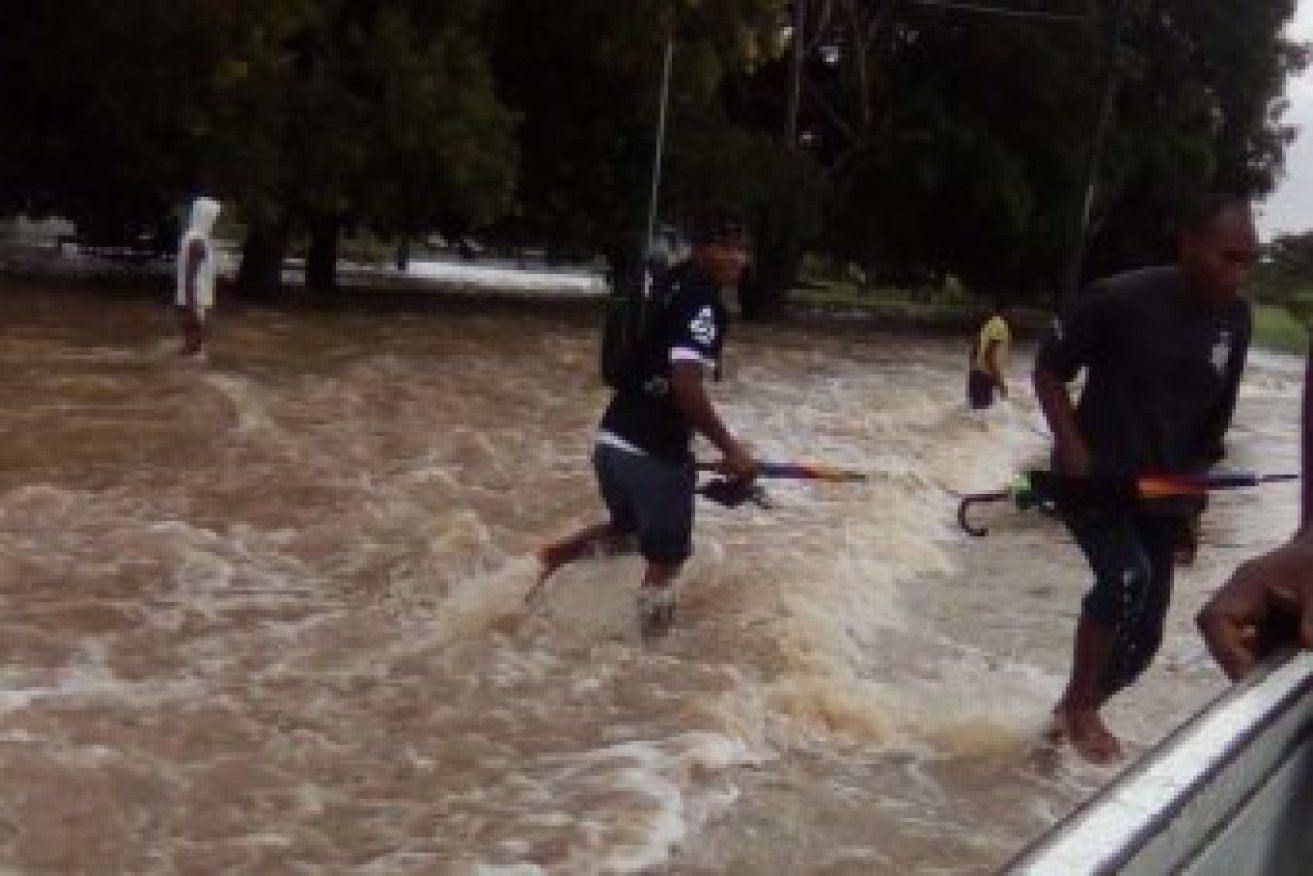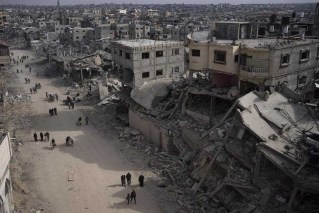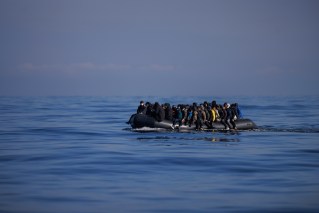While Australia burns, widespread flooding hits South Pacific

Heavy rains across the Solomon Islands has compromised the clean water supply system. Photo: ABC News: Georgina Kekea
Heavy rains continue to fall across the South Pacific, causing flooding from Papua New Guinea’s east to Samoa.
Parts of the Samoan capital, Apia, have flooded, with authorities advising families living near rivers to move to higher ground.
Mata’afa Keni Lese from the Samoa Observer says it is unusual to see flooding simultaneously across so many parts of the Pacific.
https://twitter.com/GeeEssTee_23/status/829461235200438272
“This is the first time I’ve actually known when Samoa, Fiji, Tonga and all the other countries are flooded at the same time,” he said.
“Before you would hear about flooding in Fiji and then the weather is fine in Samoa, but now everywhere is flooded, which to me is pretty interesting.”
Mr Keni Lese says the main problem associated with flooding in Samoa is the lack of drainage.
“The Government has been trying for years to fix the drainage,” he said.
“They have spent millions on the drainage but they still haven’t fixed the problem, so the question is — who has been fixing it? And what has been done with all those millions?
The heavy rain in the Solomon Islands has affected the accessibility of clean water.
The Solomon Islands Water Authority reported high turbidity and extensive damages to the main distribution pipeline.
As a result, the St John School in Honiara, which enrols over 1,000 students, had to delay the start of the school year.
“Without water our toilets, and sanitation in general, will be affected” school principal Peter Misiga said.
South Pacific Convergence Zone
Neville Koop from NaDraki Weather Service in Fiji says the deluge is a result of a “particularly active” band of clouds called the South Pacific Convergence Zone (SPCZ).
Water levels at the Nadi bus stand continue to rise. @JacqueeSpeight @FBC_News pic.twitter.com/mqt2VoxzeQ
— CHARLONNE💫 (@ecjmagnus) February 7, 2017
The SPCZ is the most extensive and persistent rain band in the southern hemisphere.
Small changes in its position can cause drastic changes in weather conditions — including droughts, floods and tropical cyclones — experienced by island countries across the Pacific.
The variability of the SPCZ is mainly influenced by the El Nino Southern Oscillation events; moving northeast during El Nino (and southern winter), and south-west during La Nina (and southern summer).
Flood waters In sabeto, nasoso, Waimalika n barara@FBC_TV @fijivillage @jmetoro @JacqueeSpeight
From khans ranch pic.twitter.com/tMDcQXZtWD— Dr Nushrat Khan (@NushKhan007) February 8, 2017
Rainfall associated with the SPCZ is heaviest during December-February. In this time the monsoon trough of the Inter-Tropical Convergence Zone, the equatorial zone where the trade winds meet, is at its closest to the SPCZ, and feeds moisture into the system.
– Pippa Binfield








